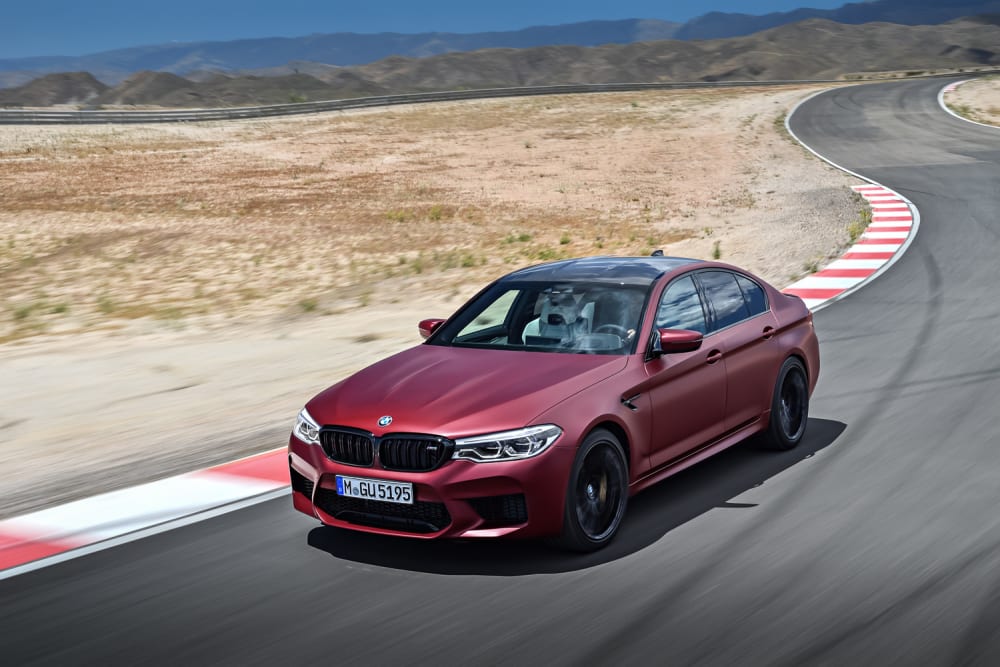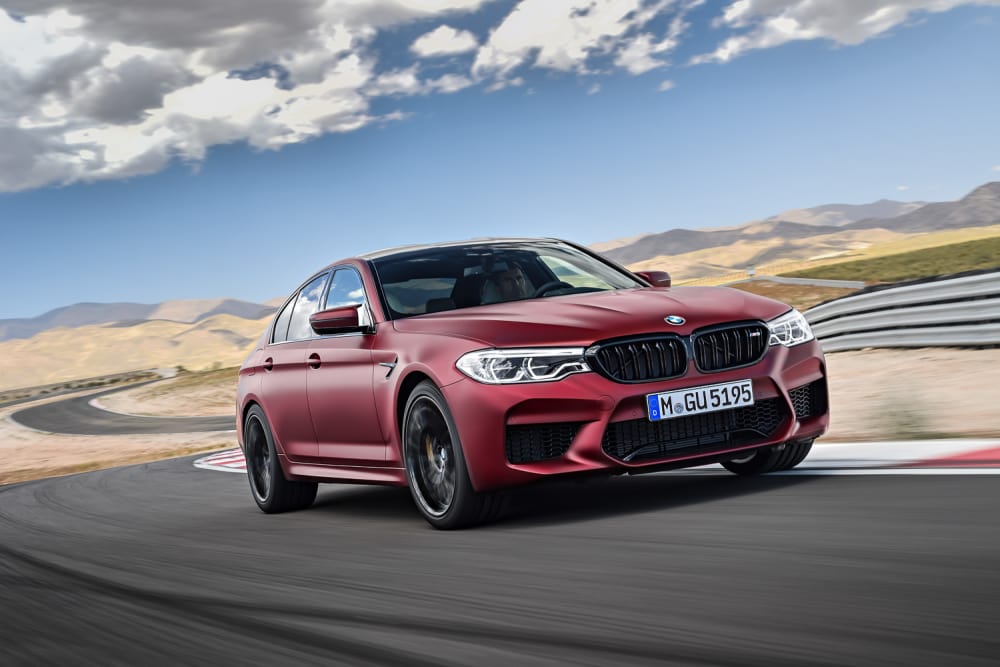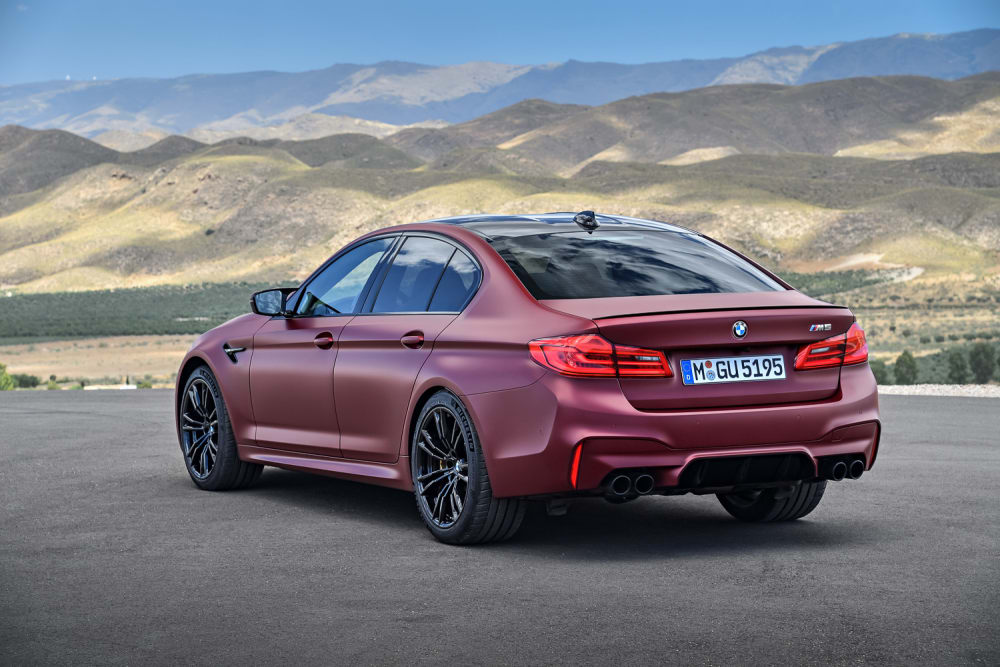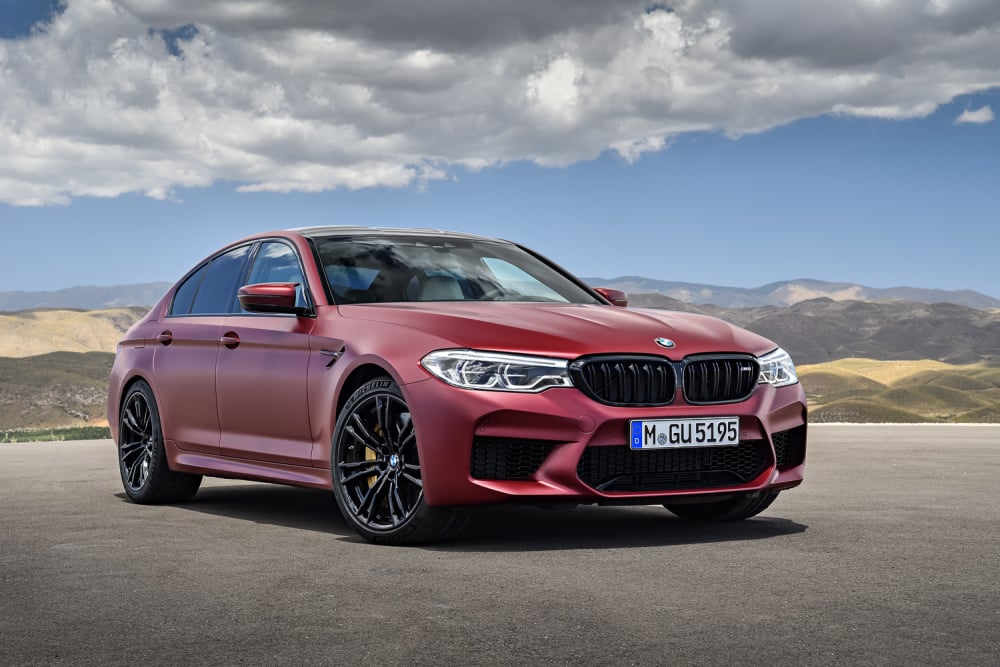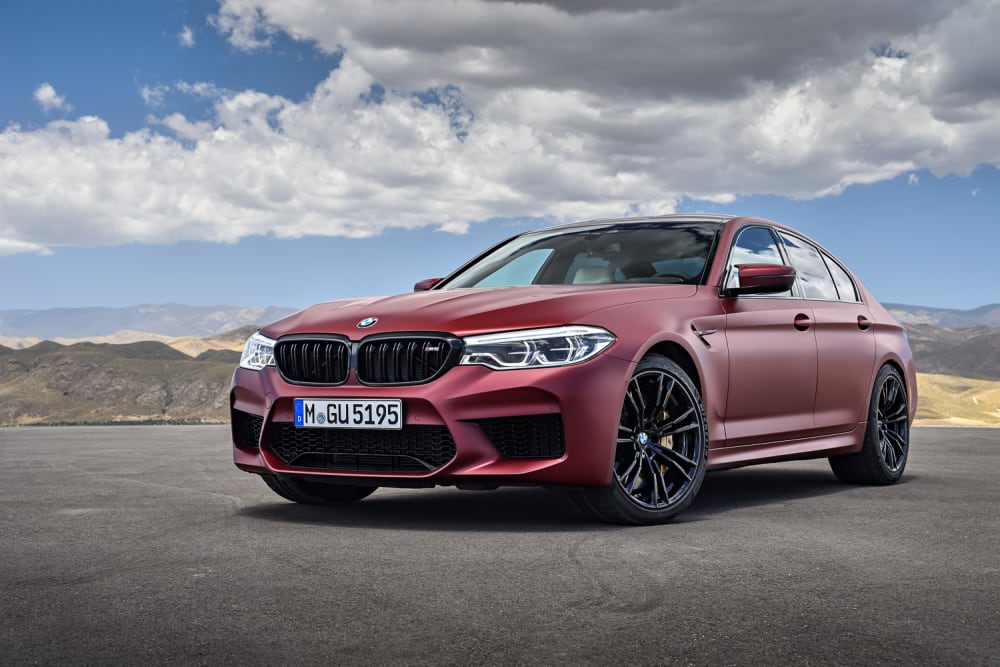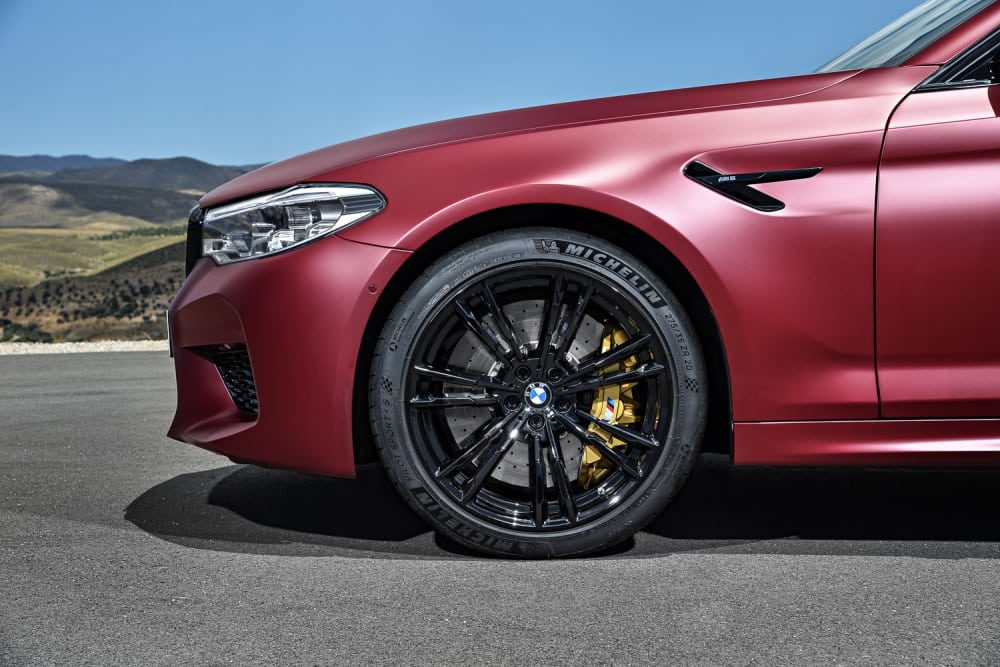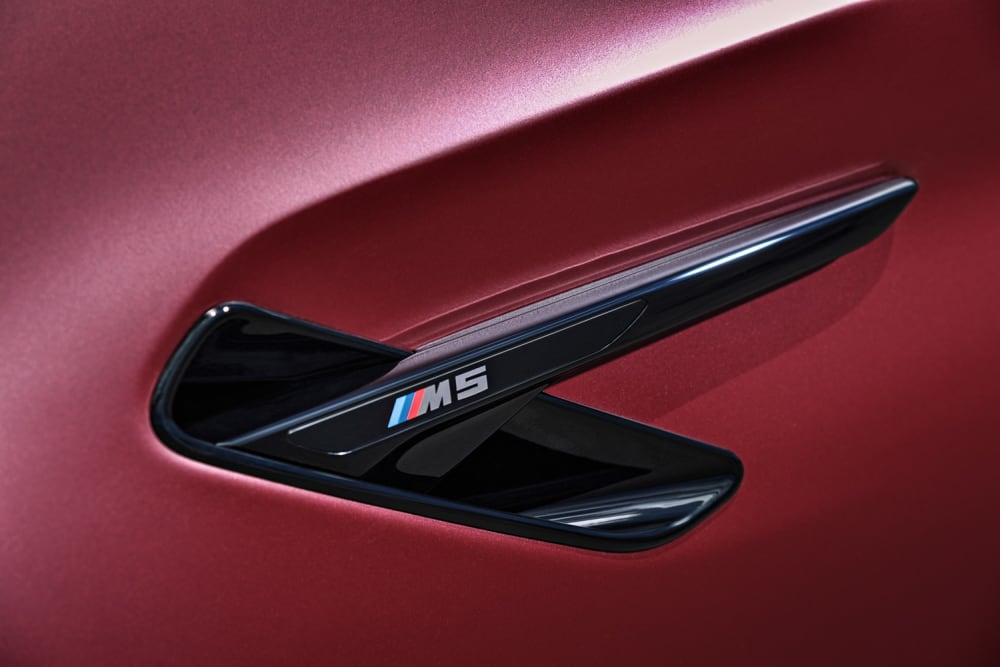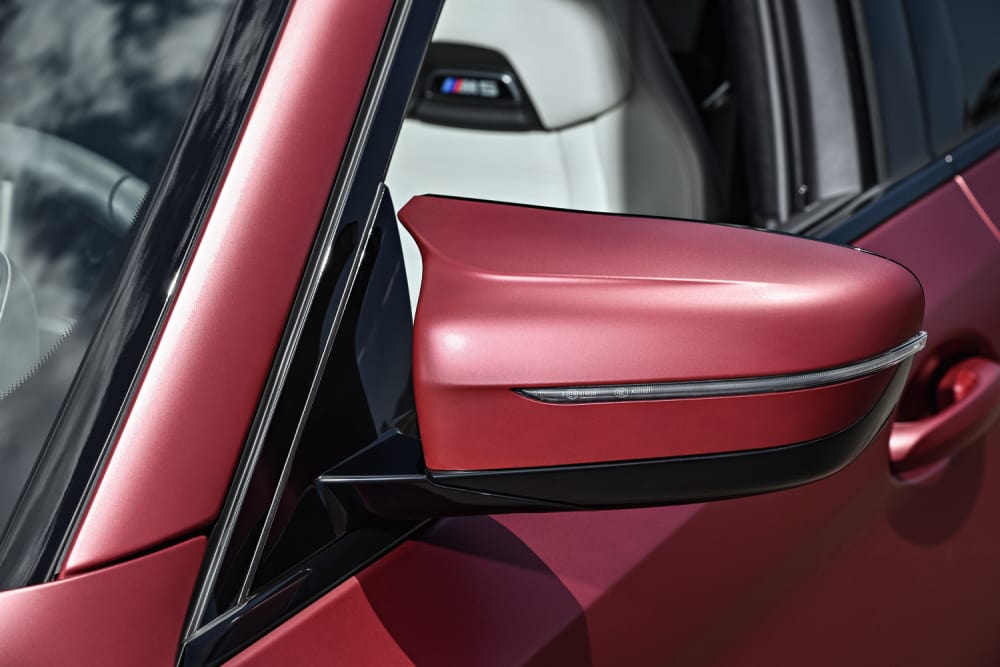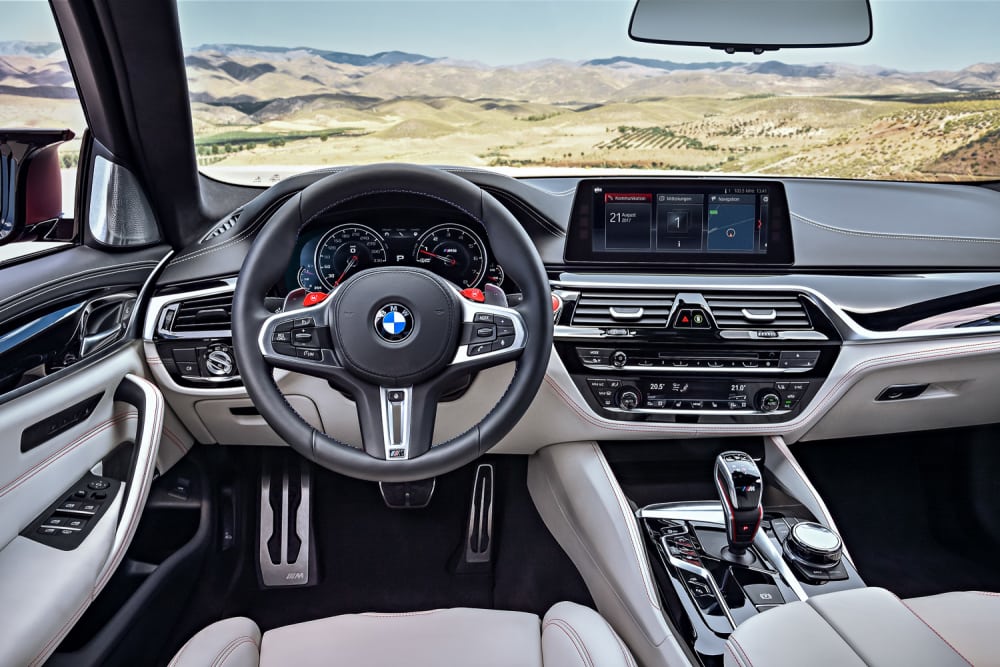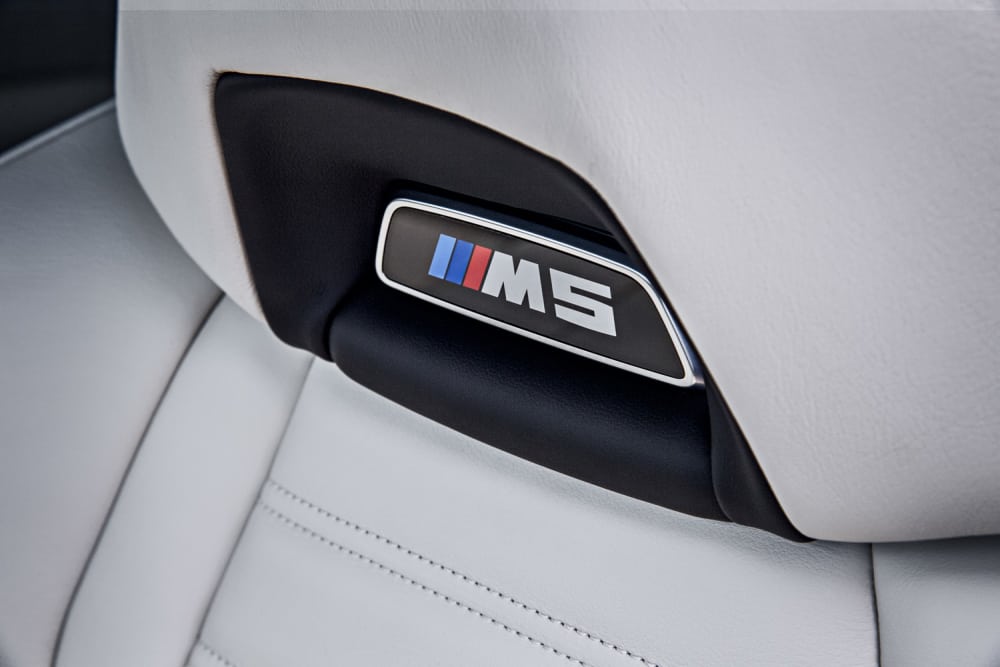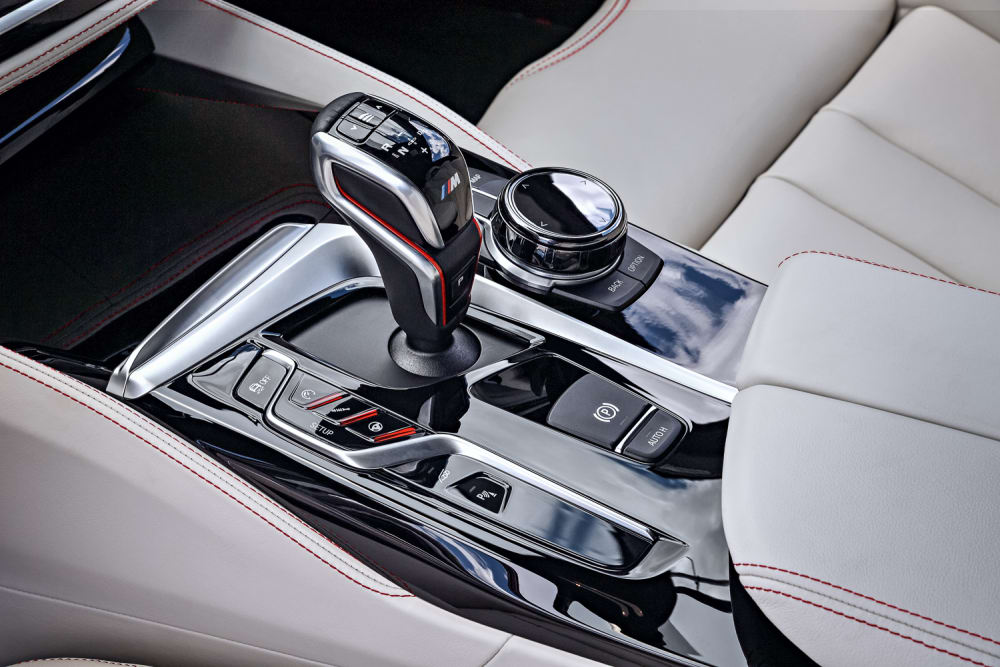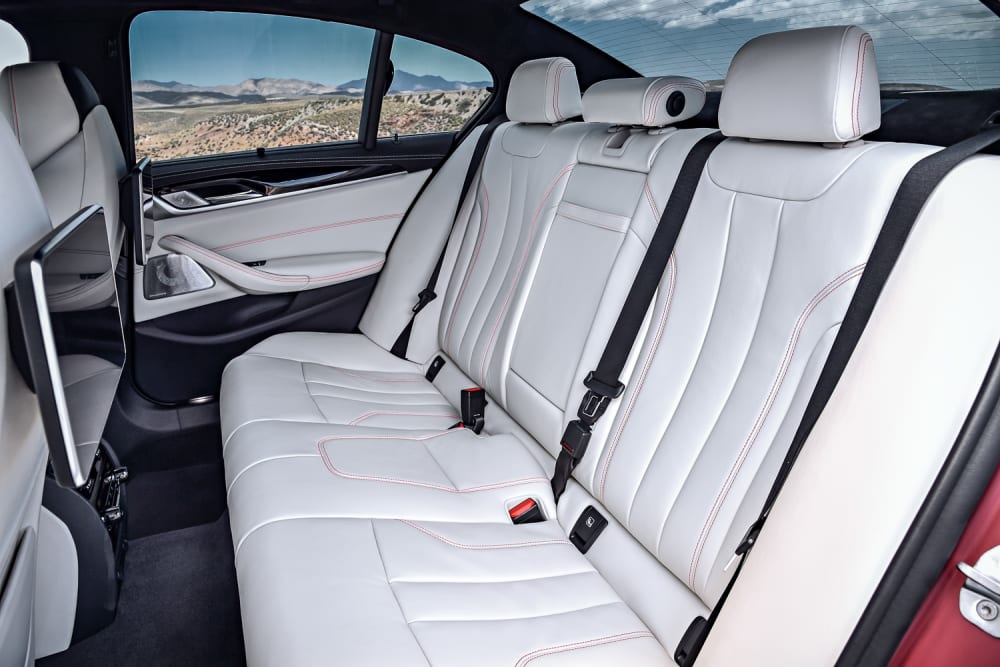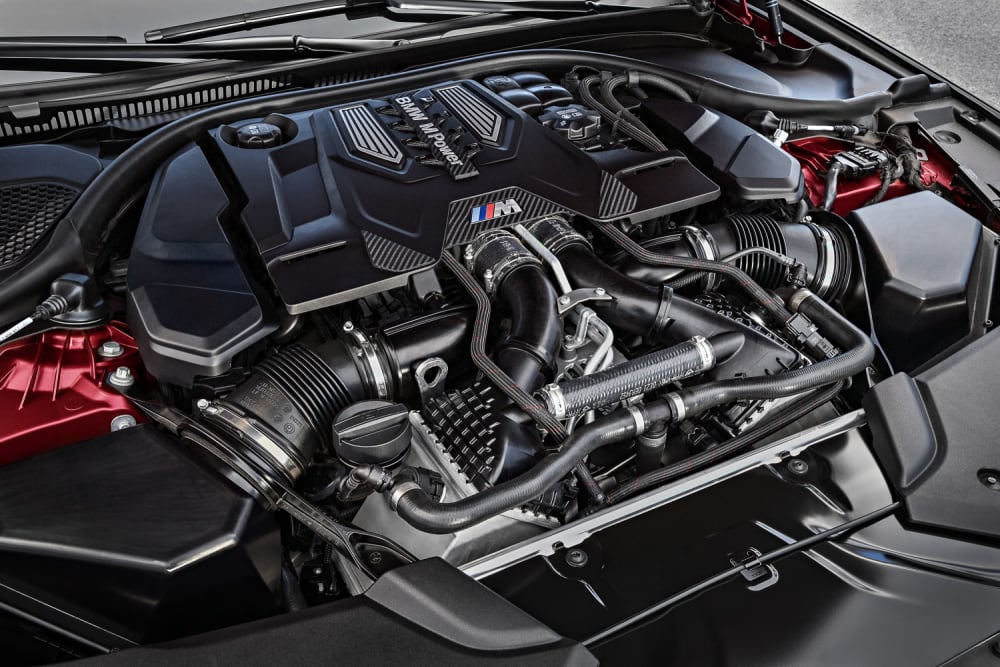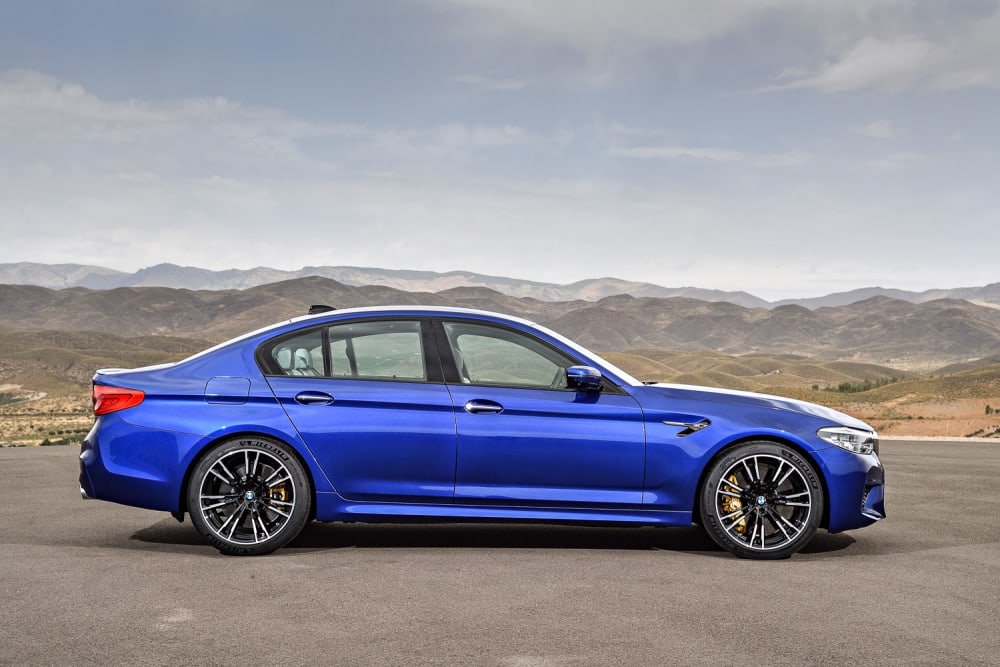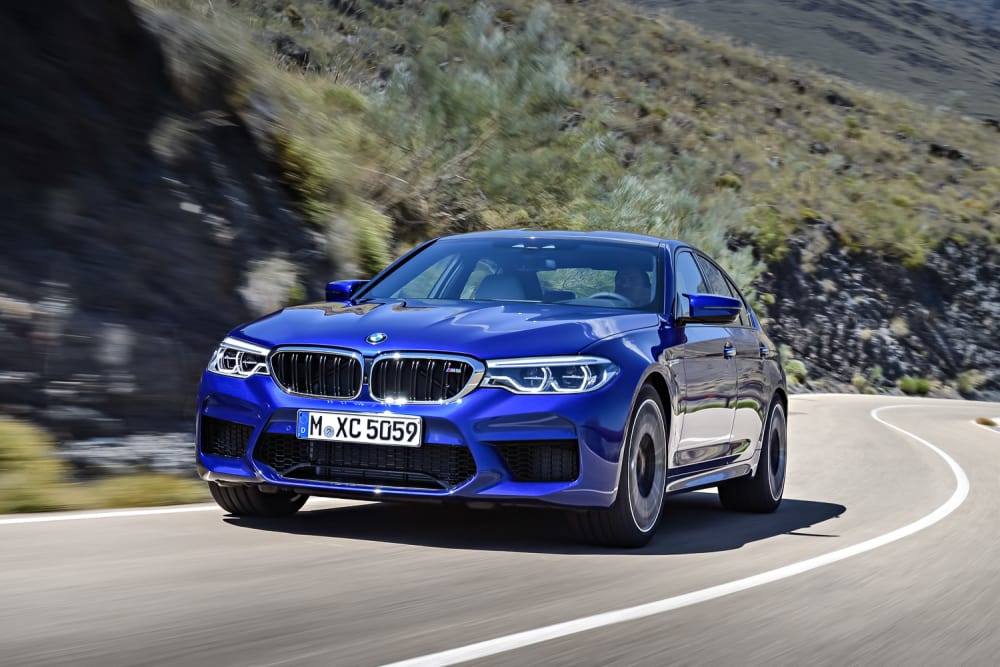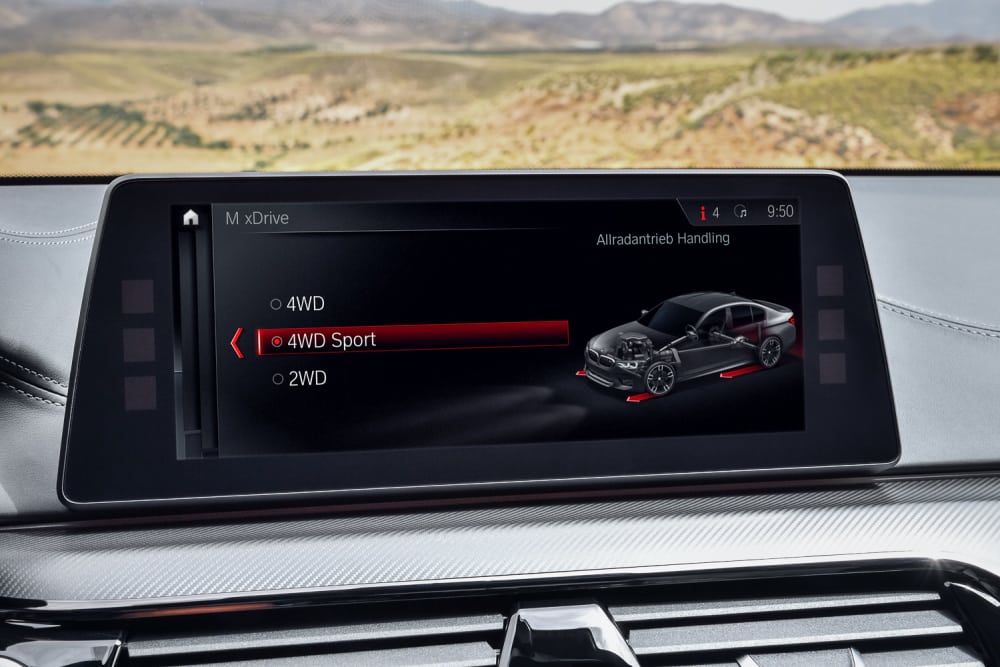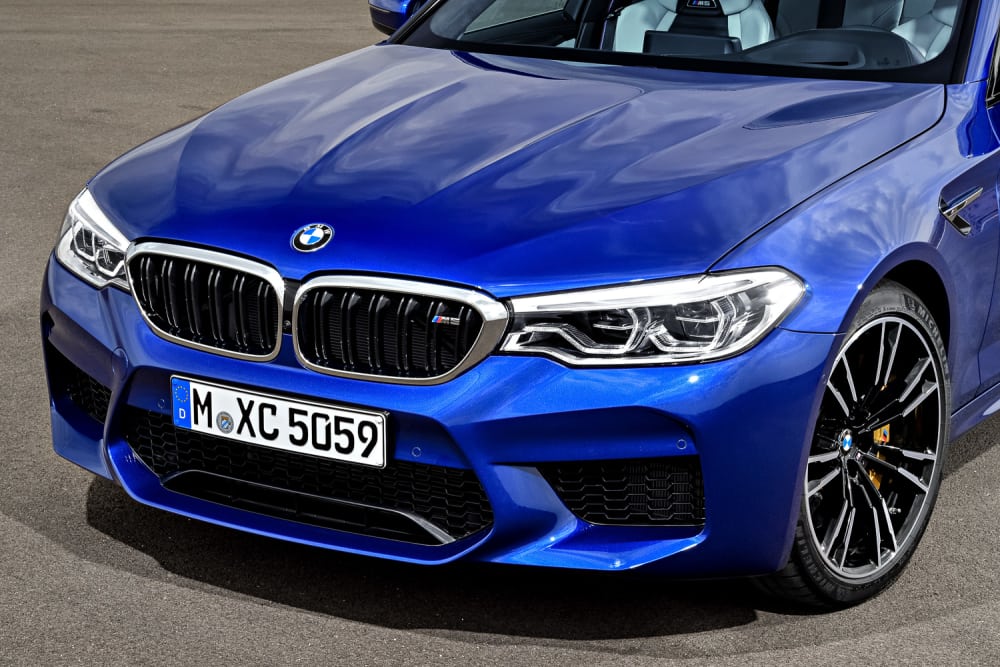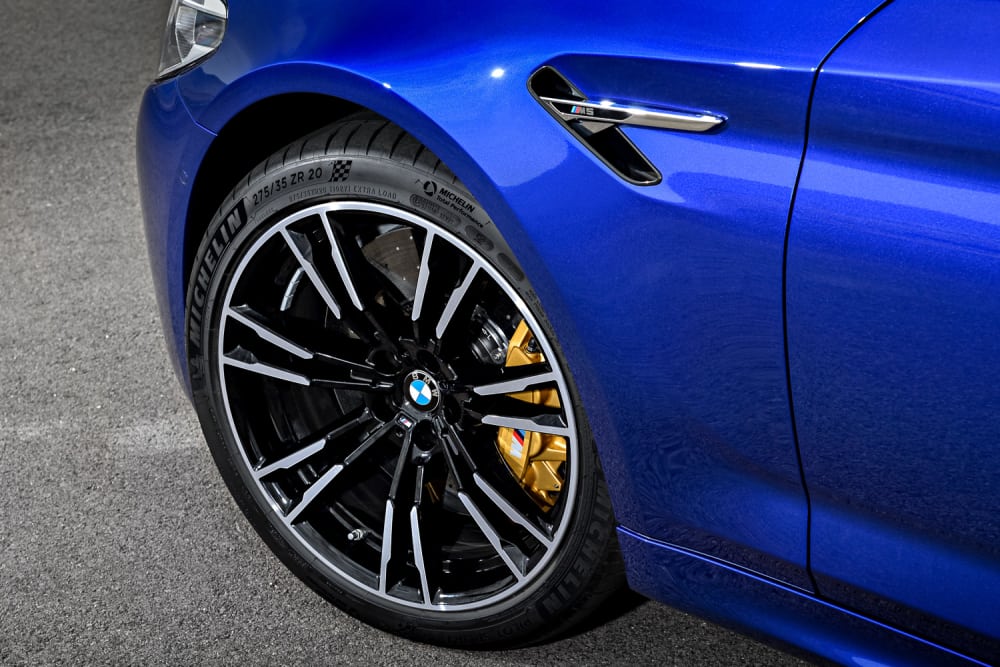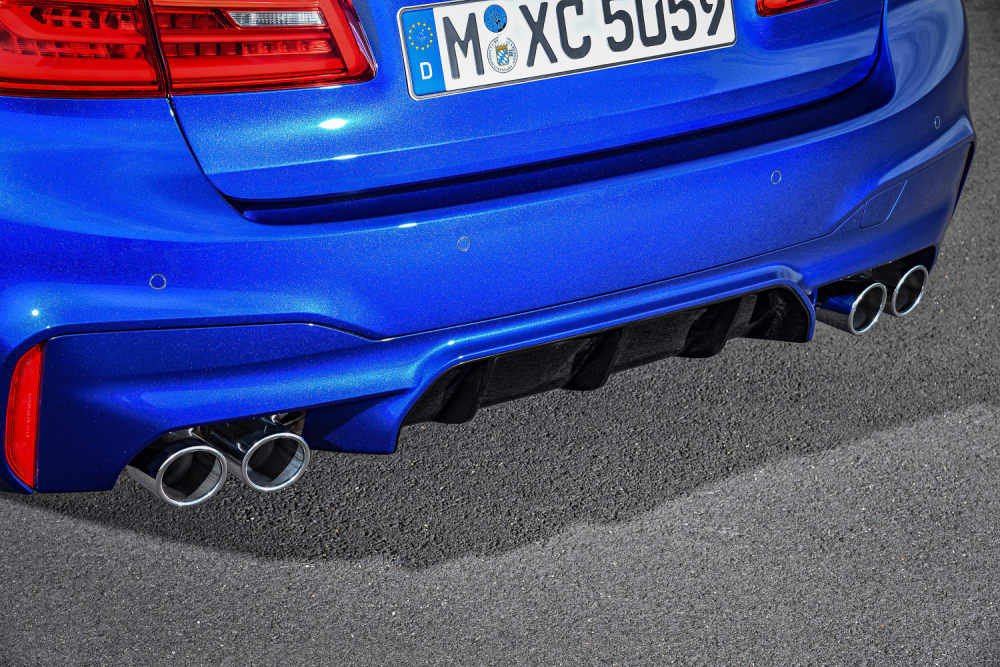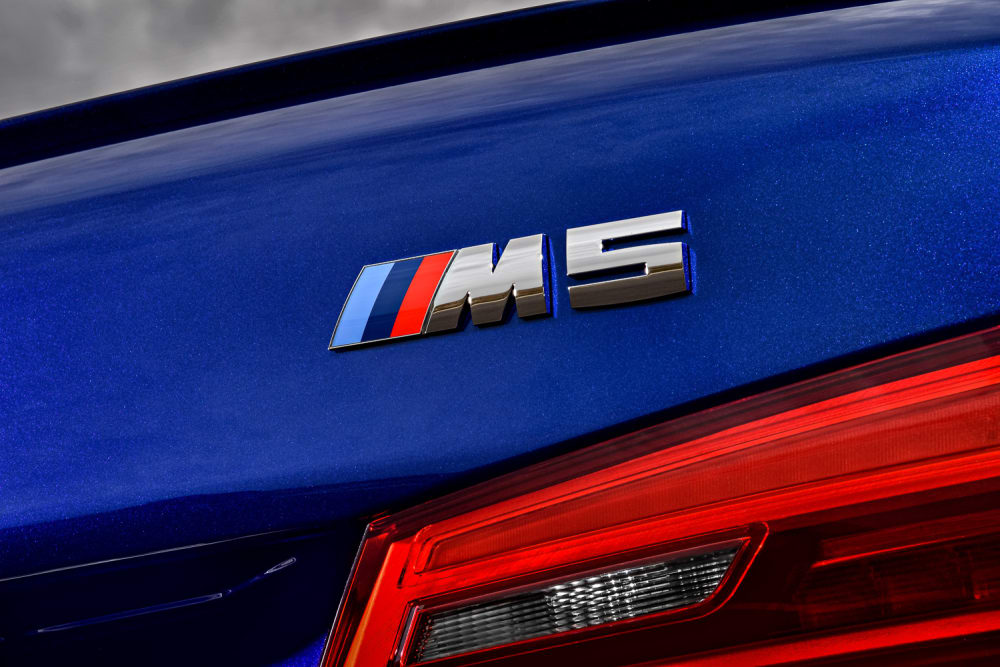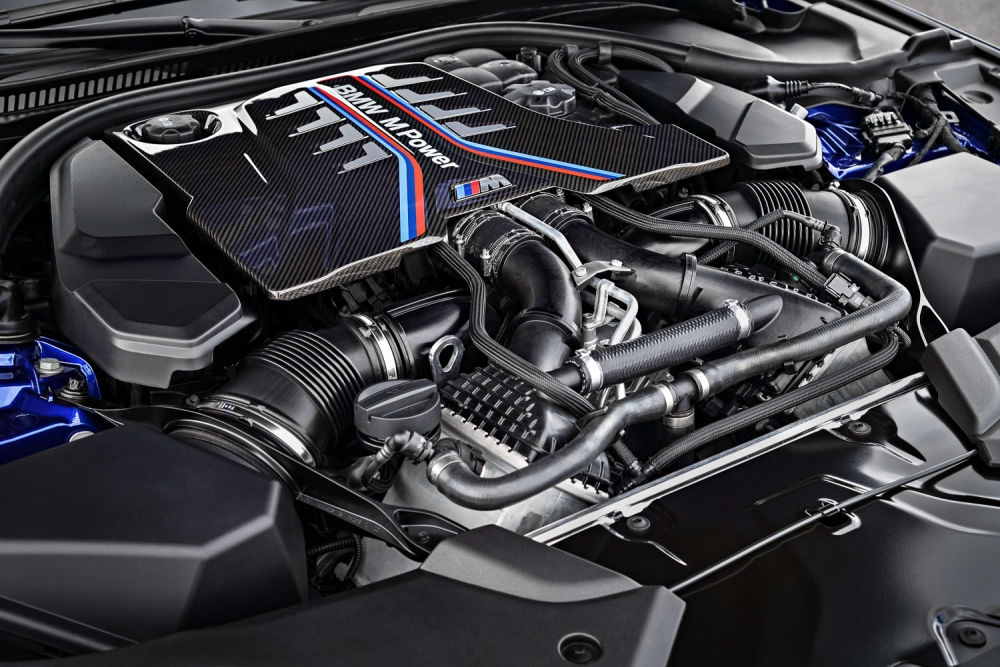CARS.COM
Competes with: Mercedes-AMG E63
Looks like: Per usual, a hunkered-down version of the 5 Series on which it's based
Drivetrain: 600-horsepower, twin-turbo 4.4-liter V-8 with eight-speed automatic transmission; all-wheel drive
Hits dealerships: Spring 2018
If the corona around today's solar eclipse evokes sweeping curves 'round your favorite racetrack, a BMW M5 of any vintage is a terrific way to experience them — no eclipse glasses needed. Now there's a new vintage in town: Witness the redesigned BMW M5, a high-performance sedan based on the redesigned 5 Series that arrived one model year ago. It hits U.S. dealers next spring, six years before the next eclipse.
Related: We Performance-Test BMW's V-12 7 Series
An M version of the new 5 Series already exists. But it's the M550i, hatched from BMW's effort to spread its performance brand beyond a select few halo cars. (Yes, that distills what M stands for, but other luxury brands are doing the same with their performance monikers.) As you'd expect, the M5 packs considerably more performance than its M550i counterpart. Both cars employ a twin-turbo 4.4-liter V-8, but the M5 cranks it up to 600 horsepower and 553 pounds-feet of torque — considerably more than the M550's 456 hp and 480 pounds-feet, not to mention the outgoing M5 (560 hp, 500 pounds-feet), which also employed a twin-turbo V-8.
The new M5 is all-wheel drive, a first for the nameplate. But BMW touts a new, M-spec AWD system with a driver-selectable mode that only sends power to the rear should you want traditional rear-drive handling.
Exterior
Versus the M550i's three-portal bumper, itself a hunkered-down take on the 5 Series, the M5 gets taller openings with some indented moldings at their upper edges instead of the M550i's silver brackets. In back, the biggest change is quad exhaust tips, unique here versus the dual openings on lesser 5 Series sedans. Lower portions of the bumper are in body-colored paint instead of the M550i's black.
The roof is carbon-fiber-reinforced plastic — a first for the M5, though other M models also employ it. Nineteen-inch alloy wheels wear P275/40R19 front and P285/40R19 rear tires; 20-inch wheels with tires of the same width are available.
Interior
Inside, the front seats have more aggressive bolstering, particularly at the shoulders, with an illuminated M5 logo at the base of the head restraint. The steering wheel has two extra red paddles, which sit inside the traditional shift paddles: M1 and M2, which allow you to fast-track the AWD, electronic stability system, transmission and engine response, suspension setup and head-up display to pre-authorized settings.
Under the Hood
BMW says it took its twin-turbo 4.4-liter V-8 on a "thorough overhaul," from higher fuel-injection pressure to better lubrication and cooling. The resulting 553 pounds-feet of torque comes from 1,800-5,700 rpm, where the engine's peak 600 hp starts. Drivers can choose between Efficient, Sport and Sport Plus modes, with set exhaust sounds you can further customize through an M Sound Control button. The results are considerable: 60 mph comes in a scant 3.2 seconds — far quicker than the M550i's already-blistering 3.9-second sprint, per BMW's numbers, and a bragging-rights tick ahead of the Mercedes-AMG E63 S (3.3 seconds, by Mercedes' specs).
BMW claims the rear-biased AWD system allows a certain amount of rear-wheel slippage even in its default mode to give a sense of rear-drive dynamics. An active differential that can route power between the left and right rear wheels. Sportier driving modes give an even heavier rear bias and allow more rear-wheel slippage. Finally, expert drivers can go full rear-drive with a mode that only directs power to the back.
The suspension — double wishbones in front and a five-link rear — employs M-specific tuning with firmer stabilizer bars, stiffer mounts and additional bracing. The adaptive shock absorbers have M-specific tuning, as well, with three selectable settings. Six-piston front brakes with 15.6-inch discs are standard; the rears have single-piston calipers and 15.0-inch discs. Optional carbon-ceramic brakes have slightly larger front discs (15.7 inches) and improved performance, but they also cut unsprung weight by 51 pounds.
